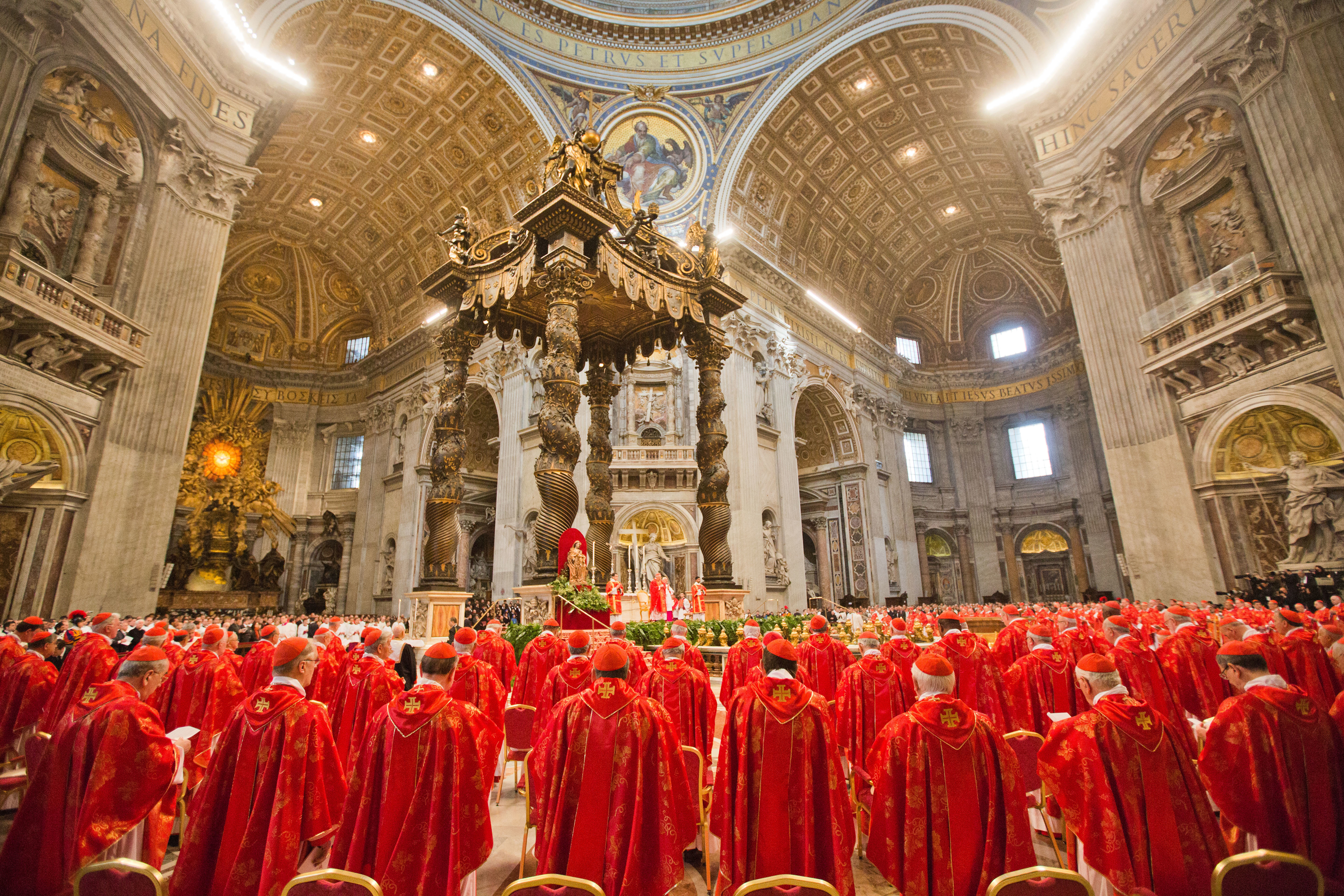Cardinal is one of a group of Roman Catholic clergymen who serve as counselors to the pope and rank next to him within the church. The cardinals as a group form the Sacred College of Cardinals. Their most important responsibility, as a body, is to elect a new pope when the current pope dies or resigns. For information about how cardinals elect a pope, see Pope (The election of a pope) .

Many cardinals head Catholic dioceses throughout the world. Other cardinals help govern the church from the Vatican in Rome. Individual cardinals have no lawmaking power. However, their rank gives them great influence in church affairs. Since 1059, the Sacred College of Cardinals has elected every pope. In 1970, Pope Paul VI ruled that no cardinal past the age of 80 could vote for a new pope.
The pope appoints all cardinals in a ceremony called a consistory. For hundreds of years, a pope could make any Roman Catholic a cardinal, and some popes even appointed laypersons to the office. In 1917, the church adopted a rule that went into effect in 1918 providing that cardinals must be at least priests. In 1962, Pope John XXIII declared that all cardinals must be bishops. Cardinals who were not bishops were ordained bishops.
In 1586, Pope Sixtus V set the number of cardinals at 70. After 1959, Pope John XXIII and Pope Paul VI increased the number several times to provide a wider international representation. In 1973, Pope Paul VI limited the number of cardinals eligible to vote for a new pope to 120. Since then, however, the number of cardinal electors has sometimes been higher. Today, cardinals represent all areas of the world.
The origin of the term cardinal is not certain. Today, many scholars believe the title originated from the fact that some bishops were incardinated—that is, named to serve a diocese other than the one in which they had been ordained. The scarlet color of cardinals’ vestments (ceremonial garments) signifies sacrifice.
